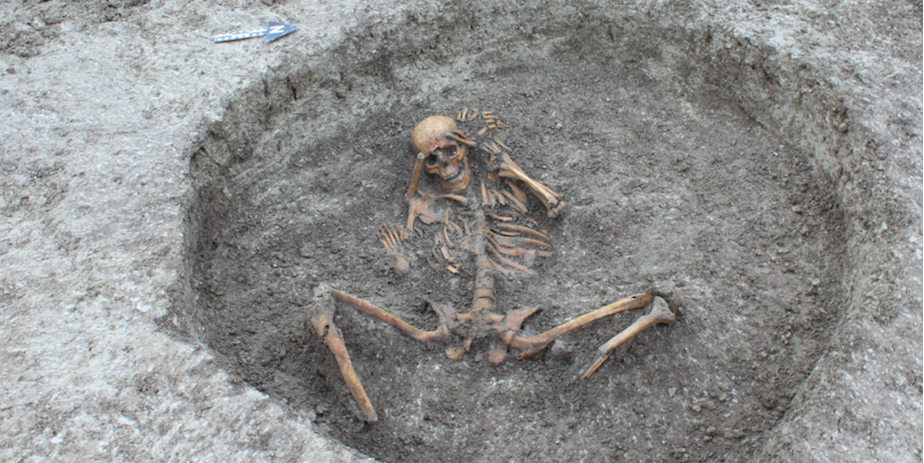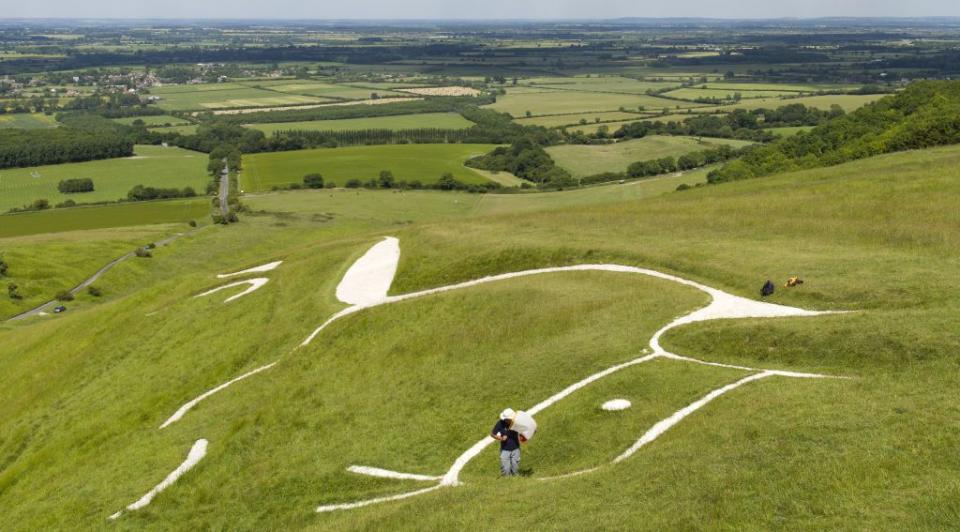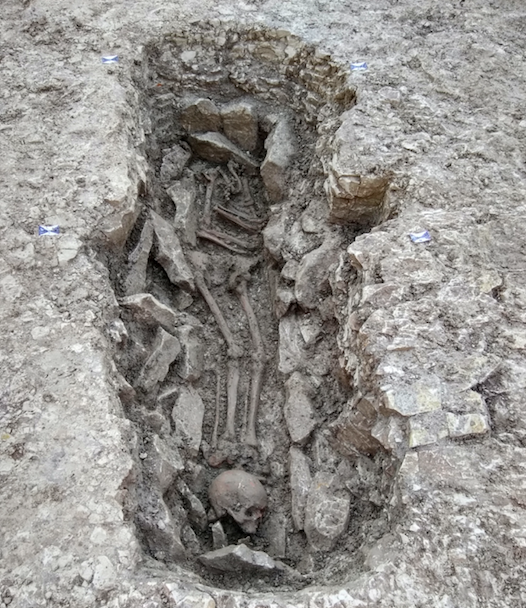Water Pipeline Workers Stumble Across Dozens of Iron Age Skeletons

Historic finds are common on construction projects in older cities like London or Rome, and the same applies for their smaller neighbors. Oxfordshire is a county in southern England dating back to the 10th century, but a stunning discovery there of 26 human skeletons, some believed to have been part of "human sacrifice," offers a visceral reminder of how closely modern cities overlap on top of history.
The project is meant to protect one of southern England's cherished natural ecosystems, a chalk stream. But digging crews didn't expect to find so many bodies, as well as evidence of dwellings, including animal carcasses, pottery, cutting implements, and a decorative comb.
A multi-million pound project to protect the future of a rare #Oxfordshire chalk stream has revealed some fascinating and gruesome discoveries dating back almost 3,000 years...*warning if squeamish* - https://t.co/t4CdjegmU0 pic.twitter.com/dzUllzg5OB
- Thames Water (@thameswater) April 15, 2019
“The new Thames Water pipeline provided us with an opportunity to examine a number of previously unknown archaeological sites" says Neil Holbrook, chief executive of Cotswold Archaeology, which consulted with Thames Water during the project, in a press statement.
“The Iron Age site at Childrey Warren was particularly fascinating as it provided a glimpse into the beliefs and superstitions of people living in Oxfordshire before the Roman conquest. Evidence elsewhere suggests that burials in pits might have involved human sacrifice. The discovery challenges our perceptions about the past, and invites us to try to understand the beliefs of people who lived and died more than 2,000 years ago.”
Little is known about these ancient Britons and the lives they lived. One thing that is known is that they appreciated the natural chalk of the region just as many do today, creating an artifact known as the Uffington White Horse, a giant pictograph close to the Thames Water pipeline site.


But beyond magnificent creations like the White Horse, little is known of their daily lives. “The results from the analysis of the artifacts, animal bones, the human skeletons and the soil samples will help us add some important information to the history of the communities that occupied these lands so many years ago,” says Paolo Guarino, Cotswold Archaeology project officer.
For Thames Water, the find elevates a standard environmental project into a sign of the region's deep history, allowing residents to enjoy the same environment that people have for thousands of years.
“We’ve found significant historical items on many previous upgrade projects but this is one of our biggest and most exciting yet," says Chris Rochfort, Thames Water environmental manager.
“This is a £14.5m ($18.99 million) project which is going to have real benefits for the environment by reducing the need to take water from the Letcombe Brook, a chalk stream which is a globally rare and highly important habitat for us to protect. As a result, future generations will be able to enjoy it for years to come-and now they can also learn about their village’s secret history.”
Source: USA Today
('You Might Also Like',)

